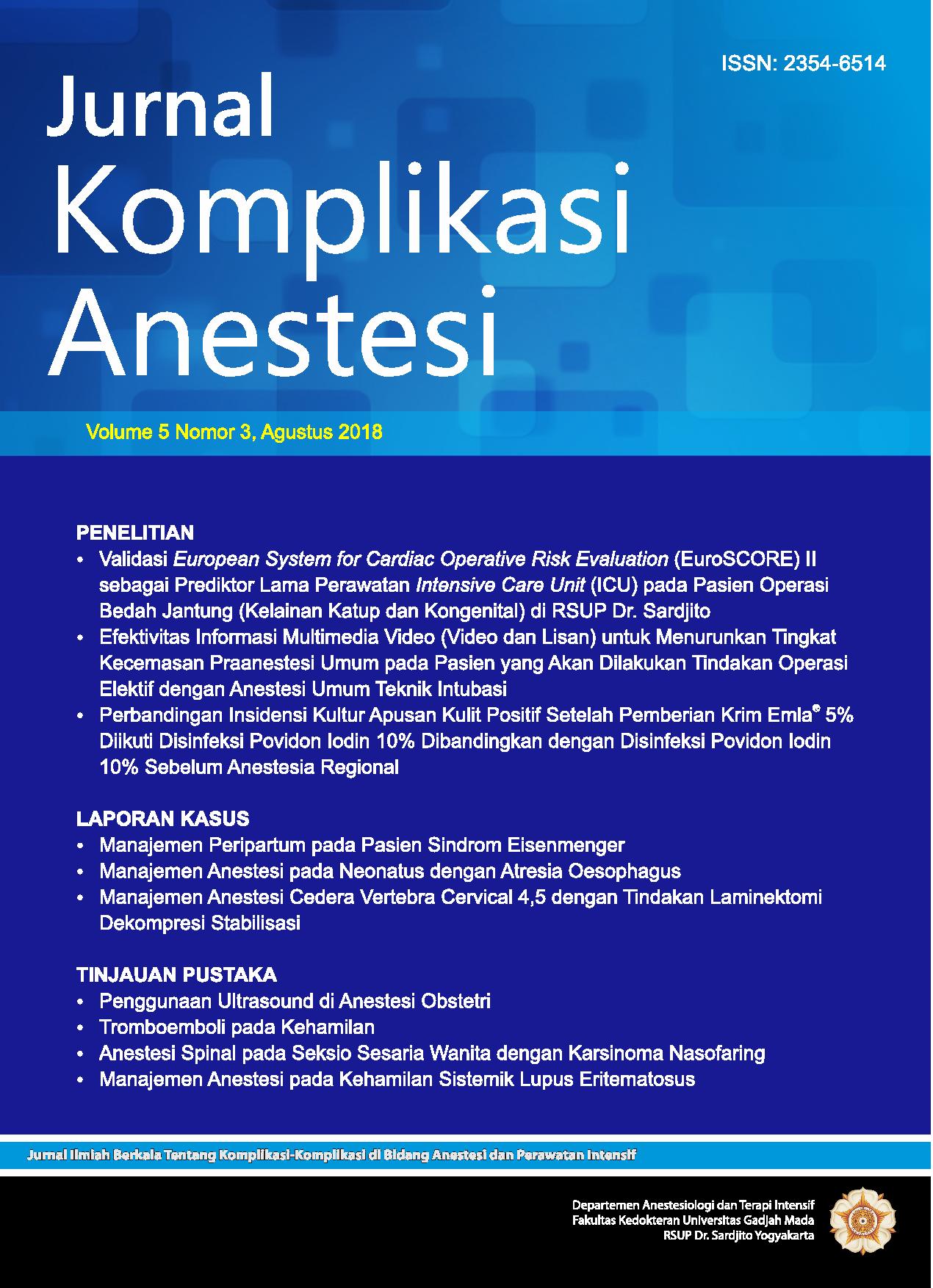Perbandingan Insidensi Kultur Apusan Kulit Positif setelah Pemberian Krim Emla® 5% Diikuti Disinfeksi Povidon IODIN 10% Dibandingkan dengan Disinfeksi Povidon IODIN 10% sebelum Anestesia Regional
Abstract
Background. Strategies for reducing pain during needle injection include the provision of eutectic mixture of local anesthesia (EMLA) cream, EMLA contains lidocaine that as in vitro experiment believed to have bacteriostatic and bacteriocid effects, EMLA cream can penetrate into deeper layers of skin, EMLA analgesia can penetrate the skin layer with a thickness of 2 mm after 60 minutes and 3 mm after 120 minutes, in which case it can explain the antibacterial effect of EMLA in the long term. Infection that related to spinal anesthesia is a serious complication which may cause meningitis, paralysis and even death. Many studies showed that the skin puncture site was a potential pathogen source during spinal anesthesia procedure. Therefore, effective skin disinfection before the procedure must be performed. Povidone iodine is the most common antiseptic for skin disinfection before spinal anesthesia procedure and has been already stated in Guidelines of Anesthesiology Practice in Sardjito Hospital, Yogyakarta. The aim of this study is to compare positive skin swab culture incidence among patients who are performed with 5% EMLA and 10 % povidone iodine compared with single 10% povidone iodine for skin disinfection in regional anesthesia procedure.
Methods. The design of this study were using single blind randomized controlled clinical trial. Thirty-six patients undergoing regional anesthesia (spinal, epidural, combine spinal epidural) and divided into 2 groups, 5% EMLA + 10% povidone iodine (E) group and single 10% povidone iodine (P) group. Pretreatment was done by examination of skin culture and after disinfection was done re-skincare culture examination. The incidence of positive skin swab cultures were recorded then.
Result. The incidence of positive skin swab cultures after administration with EMLA followed by 10% povidone iodine is (11.8%) was less than povidone iodine 10% (22.2%) in skin preparation prior to regional anesthesia procedures. However, there was no significant difference in incidence of positive skin swab cultures between administration 5 % EMLA followed by 10% povidone iodine with single 10% povidone iodine (p> 0,05). There was no side effects of 5% EMLA and 10% povidone iodine usage were found in this study.
Conclusion. The positive skin swab cultures incidence after administration of 5% EMLA and povidon iodine 10% were less than a single 10% povidon iodine disinfection (11.8% versus 22.2%, p> 0.05).

Copyright (c) 2018 Hendi Prihatna, I Gusti Ngurah Rai Artika, Yusmein Uyun

This work is licensed under a Creative Commons Attribution-NonCommercial-ShareAlike 4.0 International License.
The Contributor and the company/institution agree that all copies of the Final Published
Version or any part thereof distributed or posted by them in print or electronic format as permitted herein will include the notice of copyright as stipulated in the Journal and a full citation to the Journal.
















